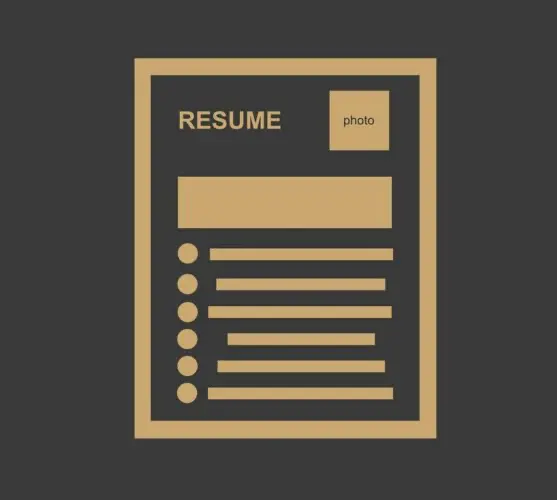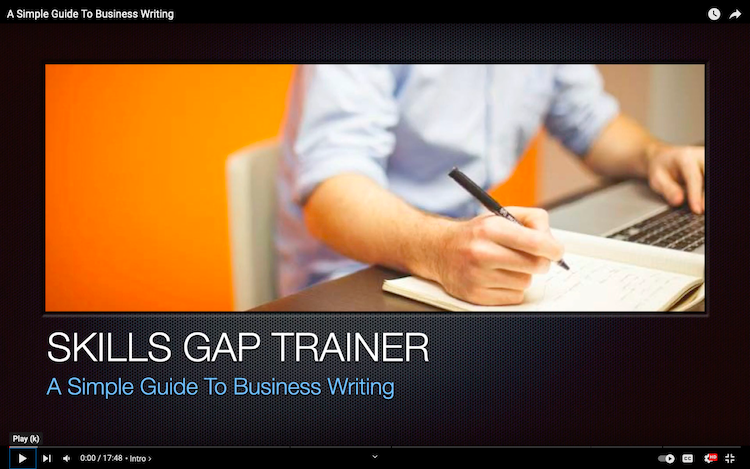A SIMPLE GUIDE TO BUSINESS WRITING
INTRODUCTION TO THE DIGITAL COMMUNICATION AGE
Being able to write well is now a critical career skill. In the digital communication age, the number and frequency of written communication interactions has increased dramatically. We write cover letters and resumes when we seek work. We write proposals when we wish to pitch an idea. We write progress reports to prove that we have accomplished projects and tasks. We write for blogs to advertise our products and services. We publish marketing materials for advertisement campaigns. We write on social media in our spare time. Writing has become an essential tool by which professionals are identified and assessed. Considering that we are also in an age of heightened competition, it pays to spend some time to learn some of the basics of good business writing.
TABLE OF CONTENTS
- Introduction To The Digital Communication Age
- Introduction To Business Writing
- The Purpose Of Business Writing
- Writing A Paragraph
- Writing A Memo
- Writing A Business E-mail
- Writing A Business Letter
- Writing A Cover Letter
- Writing A Resume
- Writing A Progress Report
- Writing For Blogs
- Writing For Your Own Website
INTRODUCTION TO BUSINESS WRITING
Business writing refers to writing that is done at work. Business writing is not limited to businesses, but can include writing for government, non-profits, charities and other types of organizations. The aim of business writing is to help the organizations operate and grow. Some examples of business writing include: sales letters, proposals, annual reports, white papers, books, other reports, e-mails, and blogs.
THE PURPOSE OF BUSINESS WRITING
Some individuals may think of the skill of business writing as having less relevance and importance than specialized skills such as science and engineering. Despite such an academic argument, in the real world, business writing serves a very important function. Business writing can lead a business to gain new customers or can lead a business to lose important business. Business writing is central to general operations and to achieving results. Business writing is used in many different areas of the organization. Some examples include: providing information, compliance purposes, gathering information, requirements specifications, report writing, help for customers, sales process, making recommendations, and promotions. In short, good business writing is a powerful asset to almost any organization.
WRITING A PARAGRAPH
Knowing how to write a paragraph is essential because paragraph writing is a key writing concept. Within a paragraph, one will usually find one central or main idea. When the paragraph finishes, and the reader starts a new paragraph, they will expect that the new paragraph will present a new topic. In short, the paragraph is a grouping of sentences that deal with a single topic.
The paragraph has three main parts.
1/ Introductory Subject Sentence – The first sentence will contain a summary of the information that will be presented throughout the paragraph.
2/ Support Information – The body of the paragraph will need to support the initial statement with evidence, details and facts. The body will expand and elaborate on the initial statement. The purpose of the support information is to back up the initial statement.
3/ Conclusion – The conclusion will remind the reader as to the central idea of the paragraph and it will tie in with the information presented in the body of the paragraph.
WRITING A MEMO
A memo is a document or other type of communication that is used within a company. Some example uses of memos include; providing information, receiving information, providing direction, asking for help, recommending solutions, responding to inquiries, or making a complaint.
Here is a sample layout of a Memo.
Header
To:
From:
Subject:
Date:
Purpose (Paragraph One) – This is simply the purpose of the memo. Describe the central idea of the memo. What is the memo about? What is the reason?
Content (Paragraph Two) – Either explain what you are asking for or provide the required reply. Support the main idea previously presented with evidence and information.
Conclusion (Paragraph Three) – Review the goal of the memo. Describe what you would like to happen and what actions are requested.
Closing Statement
Regards or Sincerely or Yours Sincerely
Name
Title
Carbon Copy – If distribution is required, list the people who need a copy under CC.

WRITING A BUSINESS E-MAIL
Companies communicate often through the use of business e-mails. Though there are small variations in format and style between the different companies, the companies generally stick to a common structure. It isn’t just companies that use business e-mail. In today’s world, it seems that everyone is using business e-mail for communications.
The business e-mail is usually composed of three different sections: top section, body, and the signature section.
Top Section – The top section contains the following fields; from field, to field, subject field, and date field.
Body Section – The body contains a salutation, the contents or details of the message, and a closing statement.
Signature Section – The signature section contains the name, title, address and potentially a scanned signature of the sender.
Other options:
CC – When you CC people on an email, the CC list is visible to all other recipients.
BCC – BCC stands for “blind carbon copy.
Though sending business e-mail is relatively simple and straightforward, there are a few common sense rules to remember. For example:
1/ The subject field must provide clear and straightforward information that is a summary of the content of the e-mail.
2/ If you need to convey a lot of information, do not put it all in the email. A long business e-mail is not effective and it is not professional. For long documents, use the attachment system and refer to any attachments in the e-mail. Also, if the attached file is not a standard word document, people may not have the necessary software installed. For this reason, it is good to indicate in the email what kind of file was attached and even what software is necessary to view it.
3/ Some e-mails require responses and some do not. Some e-mails are for informational purposes and some are for requesting some event or action to take place. The ending of the e-mail should be clear as to whether any action is expected.
4/ If you need someone to respond immediately, and to take action immediately, then don’t use the business e-mail format. Not everyone checks his or her email frequently. In this instance, it is better to call.
5/ As mentioned earlier, a business e-mail should be short and concise.
WRITING A BUSINESS LETTER
Business letters allow companies to communicate internally or externally, for the purpose of maintaining, developing and expanding their business activities. Many business functions would not be able to occur without the use of business letters. The typical business letter has the following sections:
Organization Name
Full Address
Telephone and Fax Number
Website
E-Mail
Date ——
Reference — has the file # and the letter #
Recipient Name
Company Name
Address
Postal Information
Subject line: ——— addressed to a group in a company or to a specific person
Salutation
Main Content: The main part of the letter will have about four parts. The first part will include an introduction to the letter, and it will discuss the reason or purpose of the letter. The second part will elaborate with details and discuss the central idea. The third part will request that some action be taken. And lastly, there should be a closing statement.
Polite Close – A nice way of ending a letter: Yours/Cordially/Sincerely/Regards
Signature
Name
Designation
Address
Identification Mark – Contains the initials of the person who wrote the letter.
Enclosure – Tells the reader that there are attachments to check out.
WRITING A COVER LETTER
A cover letter is a formal letter, which a job seeker submits to a prospective employer. It is the first piece of information an employer usually receives about a candidate. The letter will contain a summary of the resume, arranged in four parts.
1/ First Part – Refer to the position you are applying for and touch on what will be discussed.
2/ Second Part – Discuss your work experience and qualifications.
3/ Third Part – Discuss your abilities and skills and how they match the needs of the position.
4/ Fourth Part – Mention your contact information and your availability for a meeting.
Employers receive a lot of different job applications. They may even like it when your cover letter doesn’t succeed, because that means they will now have fewer applications to review and compare. In addition to passing the cover letter review process, showcasing your great writing skills is important for another reason. If hired, you may need to write many e-mails and even online articles on behalf of the company. The better your ability to write professionally, the more valuable you will be.

WRITING A RESUME
A resume is a document, which contains various pieces of information about a job applicant. Examples of information include details on work experience, education, skills, interests, their objective, and other accomplishments. The purpose of the resume document is to both impress and advertise oneself as a match to the available position. The objective is to get a call, impress, and then hopefully land the job.
In this section, a short outline will be provided which will describe the various parts of the resume. But first, before going into the various resume section descriptions, one needs to realize why maintaining a high level of accuracy in resume writing is important. Sometimes, some job seekers feel pressured to exaggerate certain parts of their resumes, such as their work experience or their education. This is not a good idea, because if the fraud is discovered, this will lead to embarrassment and probably dismissal. In addition, advertising oneself to be more skilled than is actually the case will also be noticed. This could lead to friction between the employer and the new employee, and possible dismissal. Resumes must be crafted with integrity and accuracy.
Parts Of A Resume
A typical resume has several mandatory sections, and some optional sections. The following text is a breakdown of the various sections.
Identification – The top of the resume should list the applicant’s name, their contact details, and the current date. The name should be written in larger font, than the font size for the rest of the resume. The contact details should include several methods of communication, such as e-mail, phone and home address. Lastly, the date serves as an important versioning system, which can help the reader ascertain the recency of the information.
Objective – If included, the objective can state the objective and goals of the applicant.
Work Experience – The work experience section is usually the most important section of the resume. For experienced professionals, it is the most important section of the resume. However, for inexperienced workers, the education section would take precedence. An inexperienced worker may wish to list every position worked for, so as to demonstrate flexibility, work ethic and to show their diversity and adaptability. However, for more experienced workers, listing every position may not be necessary. In this situation, it is more important to hand pick the best work experiences, and focus on presenting a relevant, unified and continuous career path.
Education – Education is a section that must always be included on the resume. Any degrees, certifications or professional designations need to be included. The name of the credentials, the institutions that warded them, the locations of the institutes, and the year that they were issued are all necessary bits of information.
Skills – Often times, many inexperienced candidates will have a shorter work history, and consequently will have a tougher time in meeting the requirements of the positions they apply for. One possible solution is to add a skills section. This section could list various types of skills, such as creative skills and technical skills.
References – A job applicant needs to ask previous employers for permission to use them as references in their next job search. Typically, between two to four references are required. These names need to be provided as part of the resume or on a separate page.
WRITING A PROGRESS REPORT
Progress reports are provided to colleagues and to supervisors throughout the different phases of a project. They are especially important for projects that get delayed and are not on schedule. If a project falls behind schedule, there are several possible responses.
1/ A progress report can be submitted to the superior to let them know of the schedule overrun and the exact degree of completion of the project. In this instance, it is a good practice to explain the delay, and to propose a revised date for completion.
2/ A progress report can be submitted to the superior to let them know of the schedule overrun, and if there are some completed and usable modules, these can be submitted along with the report.
3/ A progress report can be submitted outlining that the project cannot be completed and a meeting will be required about project feasibility.
Remember, if the project becomes delayed, it is a good idea to increase the frequency of communication with the superiors so as to reassure them and help maintain the confidence in the endeavour.

WRITING FOR BLOGS
Blogging is now an important way through which professionals often connect with communities of people that share similar interests. Surprisingly, blogs are often considered a more authentic and credible source of information than traditional media. Many people go to blogs for their informational needs and even seek out professional advice, tutorials and guides. Besides professional advice, businesses use blogs to sell products and services.
The key to attracting clients has to do with creating a blog that provides the end user with real value. This is important because there are thousands of competing blogs, with potentially the same subject matter. However, many of these blogs do not provide valuable resources, and this is where your blog can stand out. Well-designed blogs that provide good quality and original content will be discovered.
There are a few key points that need to be applied in business blogging. 1/ Blog posts are archived by the search engines. Even if the author deletes a blog post, it is likely someone will be able to find the information that was previously posted. For this reason, do not post information unless you are certain that it can remain in the public domain indefinitely. 2/ Once information is posted online, the author’s personal and professional identity will not be separate anymore. They will merge. 3/ Think of links to other websites as valuable resources. 4/ Do not ignore conversations within relevant social media communities and keep up to date with experts in your field. 5/ Understand the goal of the posts and how they align with the objectives of the website. 6/ Understand the audience

WRITING FOR YOUR OWN WEBSITE
Self-publishing on the internet is a really good opportunity. Publishing articles online can be beneficial in several different ways. Well-written articles allow the publisher to reach out to a wide audience and to convey their level of expertise and authority to that audience. If for example the publisher is a job seeker, the enhanced credibility gained via the publishing of online articles can impress and lead to an expanded network. If on the other hand, the publisher is an entrepreneur or businessperson, the published articles can be used to market and sell products or services.
The purpose of writing articles for a website, has to do with the fact that well written articles can boost the ranking of the website. The ranking is the position in which the article shows up for a particular search term. After searching for a particular term, most people only click on the search results that show up on the front page. The goal is to have articles show up on the front page, and preferably at the top of that page. To accomplish this, it is more effective strategy to choose specialized topics and write long comprehensive articles on those topics, than to write short random blog posts. These longer, comprehensive and more resource rich articles are sometimes referred to as “evergreen” articles.
Lastly, publishing online is an effective means of mass communication. Articles that are published online can be used endlessly. The articles can be advertised on social media, in print, by e-mail correspondence and in ad campaigns. The main point is that once the article is complete, it “works for you”. It is more efficient to have an article, which attracts search traffic, than to pay advertisers to bring traffic to your site on cost per click basis.
Related books and resources:
“The Elements of Style” by William Strunk Jr. and E.B. White: This classic manual of writing provides fundamental advice on clarity, simplicity, and precision, which are crucial for effective business writing.
“On Writing Well: The Classic Guide to Writing Nonfiction” by William Zinsser: Although not exclusively about business writing, this book offers invaluable insights into writing clear, engaging, and effective prose that can be applied to business contexts.
“HBR Guide to Better Business Writing” by Bryan A. Garner: This guide by the Harvard Business Review covers the fundamentals of good business writing, from understanding your audience to crafting persuasive messages.
“Everybody Writes: Your Go-To Guide to Creating Ridiculously Good Content” by Ann Handley: This modern take on writing and content creation provides tips and strategies relevant to today’s digital business communication.
“Business Writing Today: A Practical Guide” by Natalie Canavor: This book provides practical advice for writing various business documents, from emails and letters to reports and proposals.
“Writing That Works; How to Communicate Effectively In Business” by Kenneth Roman and Joel Raphaelson: Offers practical advice for writing and communicating in a wide range of business situations.
“The Business Writer’s Handbook” by Gerald J. Alred, Charles T. Brusaw, and Walter E. Oliu: A comprehensive reference manual that covers a wide range of business writing topics and document types.
“Write to the Point: How to be Clear, Correct and Persuasive on the Job” by Salvatore J. Iacone: Focuses on writing clear, effective business communications and avoiding common pitfalls.
“Effective Business Writing: A Guide for Those Who Write on the Job” by Maryann V. Piotrowski: Provides straightforward strategies for writing with clarity and power in professional settings.
To see our Donate Page, click https://skillsgaptrainer.com/donate
To see our Instagram Channel, click https://www.instagram.com/skillsgaptrainer/
To see some of our Udemy Courses, click SGT Udemy Page
To see our YouTube Channel, click https://www.youtube.com/@skillsgaptrainer
